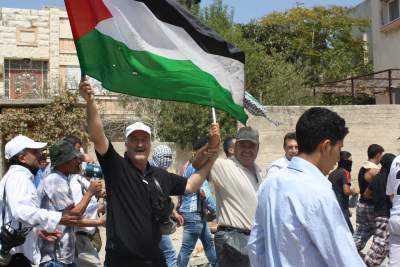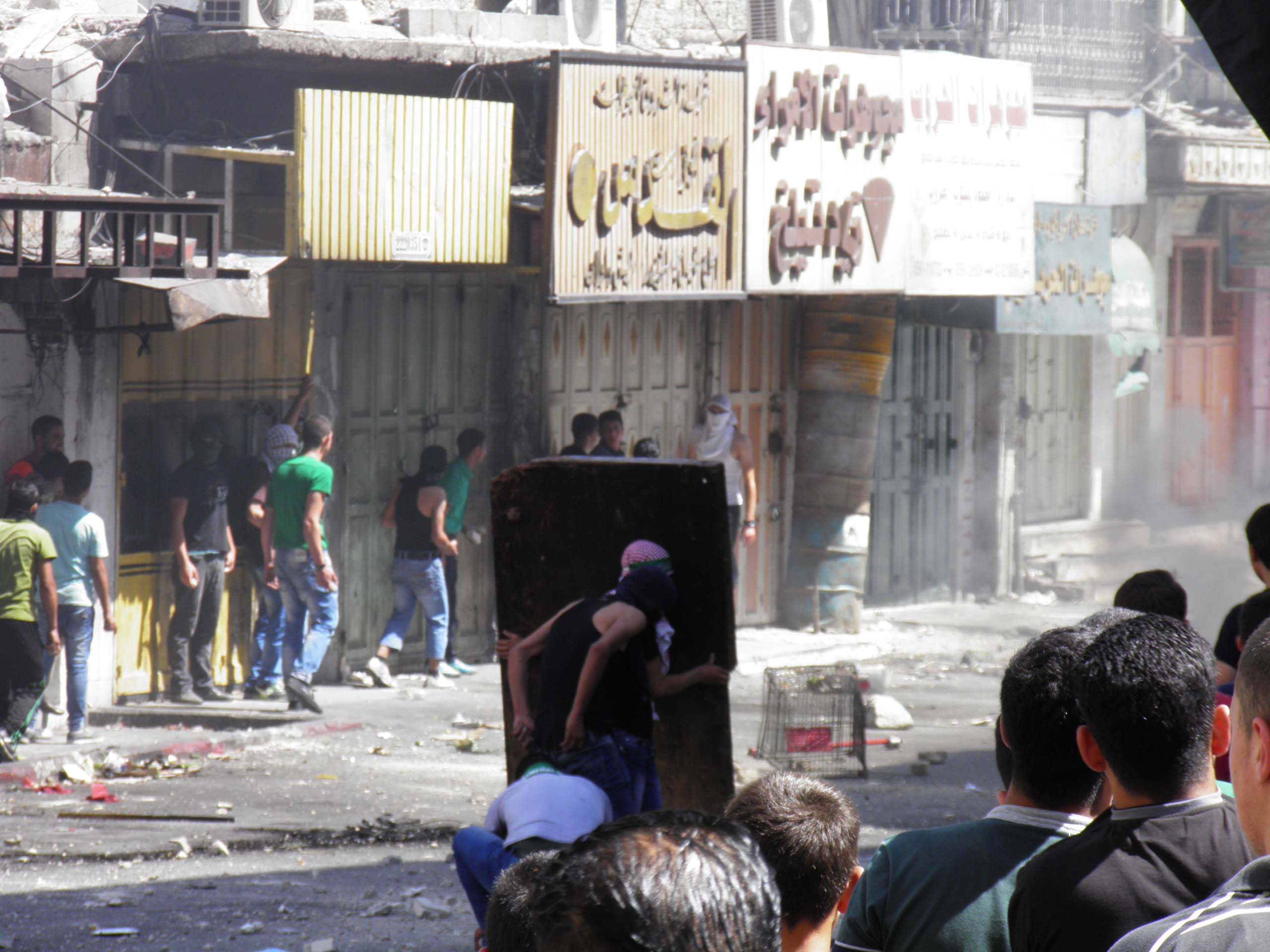Tag: Rubber-coated steel bullets
-
Violence at Kufr Qaddum demonstration
A hundred or more Kufr Qaddum villagers, accompanied by international and Israeli solidarity activists, participated in a regular protest after the prayer this Friday. Several hours before the demo started, the village youth blockaded part of the main village road and monitored the movement of the Israeli army, who frequently positions themselves, amongst the village houses…
-
Journal: Clashes in Hebron
9th August 2014 | International Solidarity Movement, Vern | Hebron, Occupied Palestine As ISM volunteers were heading back from al-Masara village yesterday, we were dropped at off at Bab Al-Zawiye, the city center of Hebron. We observed a clash between Palestinian youths and the Israeli army. Youths were throwing rocks and were gunned down with rubber coated steel…
-
Palestinians protest in solidarity with Gaza
3rd August 2014 | International Solidarity Movement, Vern | Bethlehem, Occupied Palestine On Friday August 1st, Palestinians in Bethlehem demonstrated against Israel’s massacre Gaza. Between 3,000-5,000 people protested, men, women, and children. The demonstrators marched to the checkpoint, where they faced an Israeli guard tower. People were chanting and singing, and no one was throwing any…



